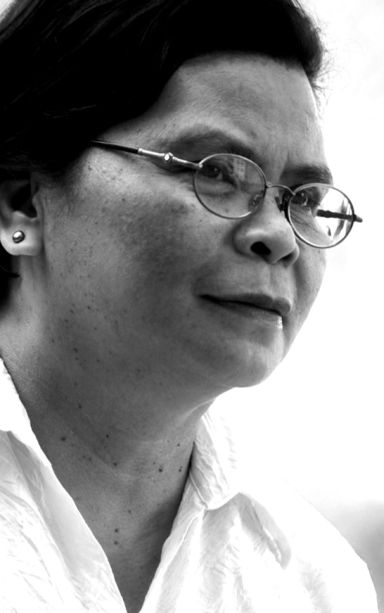
DELACERNA
This is a continuation of last week’s column on the seminar on Teaching Cebuano Literature for educators, a program of the National Commission for Culture and the Arts conducted by the Cebuano Studies Center of the University of San Carlos on July 16-18, 2018.
Last week’s column focused on Pre-colonial Cebuano Literature and Cebuano Literature during the Spanish Colonial Period.
Today’s column will feature Cebuano Literature during the American Period with Hannah Gabales as presenter, Post-World War Cebuano Literature by Leian Jane Haney Rama and Contemporary Cebuano Literature by Cindy Velasquez.
The period 1900 – 1940 has been referred to as the Golden Age of Cebuano Letters. Cebu province experienced a shorter period of the shift from Spanish colonial rule to American rule and during this time there were economic circumstances which caused social and ecological instability for four decades.
At the end of the 19th century Cebuano printed literature flourished with El Boletin de Cebu (1886-1898) as the first newspaper published by Eduardo Jimenez with known Cebuanos as contributors.
There were short-lived papers covering such topics as the Revolution, defeat of the Spaniards, American Occupation and the Filipino-American War.
From 1900 to the outbreak of the Pacific War, there were the El Nuevo Dia (1900), the first daily newspaper published by Sergio Osmeña, and Ang Suga (1901-1911), the first newspaper in Cebuano founded by Vicente Sotto. The most important publications were: Ang Camatuoran, La Precursor, La Revolucion, Bag-ong Kusog, Ang Freeman, Babaye, Nasud, Bisaya. Literature was intimately connected with journalism.
The height of Cebuano writing showed that in 1901-1941, there were 118 periodicals founded; 1901-1941, there were 10,000 poems published with 1,081 poets contributing to Bag-ong Kusog.
Cebuano language gained prestige because of the popular enthusiasm for expansion, refinement and promotion of Cebuano language.
The prestige of Cebuano language was shown through the following: The class status of its writers, the dominance of Cebuano as medium of the press, participation of the elite in Visayan academies, numerous newspaper articles and organizations of language use, nationalistic feelings were high, Spanish lost much of its prestige, and English was still incipient.
The Japanese Occupation halted literary publishing in Cebu but the war proved wealth materials for breeding writers. With the end of the war, publishing resumed.
There was a new phase, English was ascendant and Cebuano writing was marginalized. It was associated with what was “popular” and “vulgar.” There was less sentimentality and the start of realism. Publishing companies were based in Manila like Bisaya (1930–present), Alimyon (1952-1963), Silaw (1961-1964). Bag-ong Suga published from 1963-1971) The cross-fertilization between Cebuano and English writing continued. Various writers groups were organized.
There was a shift from patriotism and nationalism to personal and domestic problems. There was tighter structure, more internal conflicts, and experimentation. There was the rise of the bilingual writers.
For poetry, there was stagnation and the introduction of the free verse form. For fiction, Sugilanon (Short Story) and Sugilambong (novel), Cebuano writers in English produced significant bodies of work in English.
For Contemporary Cebuano Literature, Velasquez started with a glossary of vocabulary/literary terms. She discussed the qualities of Cebuano poetry with examples from prominent Cebuano poets. Contemporary Cebuano poetry is experimental, becoming short, repetition of words, use of free verse, use of contemporary images, and return to concretion.
There are allusions from literature, art, history, myth, and legend. There is predominance of a serious yet comical conversational tone or the other way.
For contemporary Cebuano fiction, there are stories for children, women writing, queer writing and anthology of Cebuano short stories which are available in bookstores and literary organizations.
Velasquez shared strategies in teaching contemporary Cebuano literature. Before discussion she suggests the following: a vocabulary exam, reading aloud the literary work, find another art that the same as the literary work, move your body (group activity), go out of the class room, write a summary or poem using their own words.
During discussion, she suggests observance of silence, acknowledging all answers, invest on the experience, encourage conversation, have a short debate, let them talk in Cebuano. Talk also in Cebuano.
After the discussion, Velasquez suggests the following: research on a Cebuano writer, have art work and share it to the class, let them write and explain their creative process, let them perform, use social media.
All the materials discussed for each period are available at the Cebuano Studies Center. With the suggested strategies, it is hoped that teachers will develop more interest and confidence and share this with their students.
Disclaimer: The comments uploaded on this site do not necessarily represent or reflect the views of management and owner of Cebudailynews. We reserve the right to exclude comments that we deem to be inconsistent with our editorial standards.
